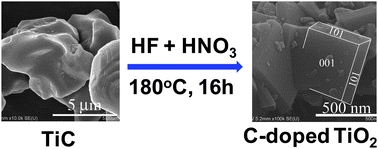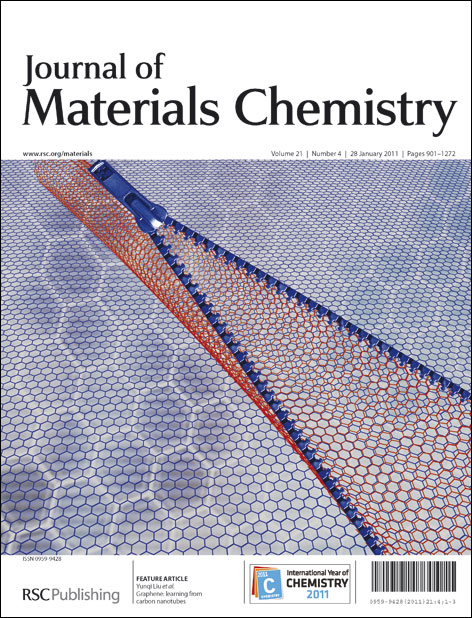Fabrication and enhanced visible-light photocatalytic activity of carbon self-doped TiO2 sheets with exposed {001} facets†
Abstract
Novel carbon self-doped TiO2 sheets (CTS) with exposed {001} facets were synthesized by hydrothermal treatment of titanium carbide (TiC) in a HNO3-HF mixed aqueous solution. In this synthesis TiC was used as a precursor of TiO2 and a source of C, which was self-doped into the lattice of anatase sheets. The resulting CTS materials were examined as photocatalysts for degradation of


 Please wait while we load your content...
Please wait while we load your content...